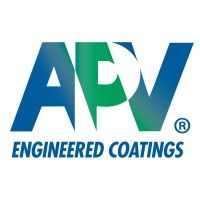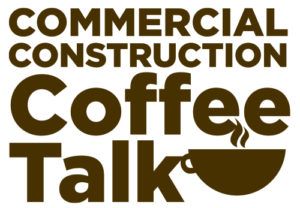- Surface design is evolving to prioritize both visual appeal and functional performance, becoming central to modern architecture and product design.
- New finishing technologies offer durability, aesthetic range, and environmental advantages across a wide range of industries.
- Real-world applications in hospitality, transportation, and retail show how advanced surfaces enhance both experience and longevity.
- Future innovations will bring responsive materials, AI-driven customization, and interactive textures into everyday environments.
Walk into any modern building, flip through a design magazine, or browse the latest product launches, and you’ll notice something subtle but powerful—surface design is no longer just an afterthought. It’s front and center, playing a starring role in how we experience everything from architecture to everyday objects.
It used to be that surfaces were purely decorative. A shiny finish here, a glossy texture there. But now, function has caught up to form. Today’s surfaces don’t just look good—they perform. They resist scratches, reduce fingerprints, enhance hygiene, and promote environmental consciousness. Designers, architects, and manufacturers are all seeking materials that do more than just look good.
And why not? In a world that’s becoming increasingly design-savvy and sustainability-minded, the future of surface design is being shaped by innovation. Beauty still matters, of course. But now it’s sharing the stage with performance and longevity in ways that are reshaping industries.
Where Aesthetics and Performance Intersect
Not that long ago, designers often had to choose between looks and practicality. You could have a sleek countertop or a durable one, but not both. However, as material technologies have evolved, so has the relationship between form and function. Today, the two are practically inseparable.
Take, for example, the rise of matte finishes in kitchen design. Once viewed as more prone to wear and smudging, new coatings have made matte surfaces more durable and easier to clean. Now, you can have a soft-touch matte stone countertop that resists stains, heat, and moisture while still looking minimal and modern.
In furniture design, lightweight composite metals are being used to create pieces that are both sculptural and structurally sound. Designers are also experimenting with reflective, brushed, or patinated surfaces to create a visual impact while maintaining strong, lightweight, and versatile materials.
Even in the tech world, product designers are obsessed with tactile feedback and finish. Think of how smartphones and laptops have evolved—not just thinner, but with brushed aluminum, ceramic textures, and fingerprint-resistant coatings that add both beauty and function.
We’re in a design era where materials are expected to serve multiple purposes. They need to enhance the user experience while meeting increasing demands for sustainability, performance, and longevity.
Elevating Surfaces with Advanced Finishes
One of the most exciting developments driving this evolution is the innovation in surface finishing technologies. These advancements are allowing designers to push the boundaries of what’s possible, especially with metals and hard surfaces.
Architects, for instance, are turning to physical vapor deposition (PVD) as a method for creating visually stunning yet durable finishes on everything from building facades to interior accents. This technique’s compelling feature is its ability to produce ultra-thin, highly adhesive coatings in a spectrum of colors without compromising on performance.
Luxury brands are especially drawn to this type of surface treatment. High-end kitchen manufacturers use it to create faucets and cabinetry hardware that resist corrosion and fading while still looking sophisticated under natural and artificial lighting. Automotive designers use it to add striking visual details to car interiors, balancing elegance with wear resistance.
There’s also a growing trend in commercial design, where hospitality and retail spaces are leveraging these finishes to create environments that look high-end while enduring constant use. Whether it’s the base of a boutique’s display tables or the metallic detailing in a hotel lobby, these coatings bring both durability and visual richness.
Designers are now incorporating PVD color finishes into commercial and residential design palettes, blending aesthetic vibrancy with technical performance. It’s not just about pretty surfaces anymore—these finishes are actively solving problems and elevating the overall quality of the user experience.
Sustainability Driving Surface Innovation
It’s no secret that sustainability has become a non-negotiable in design conversations. However, what’s truly interesting is how it’s influencing the development of surface materials, specifically. Designers and manufacturers aren’t just chasing beauty or durability anymore—they’re also hunting for materials that leave a lighter footprint on the planet.
This push is revitalising older materials and innovating new ones. Recycled metals, responsibly sourced wood veneers, and water-based coatings are gaining traction not just because they’re “green” but because they actually perform well in demanding settings. The best sustainable materials today don’t ask for compromise—they offer high performance with a side of eco-responsibility.
Coating technologies are also stepping up. Instead of relying on chemical-heavy processes, modern surface treatments use vacuum deposition or low-energy curing methods to minimize environmental impact. These processes not only cut emissions but often result in stronger, more durable finishes that last longer, reducing the need for frequent replacements.
In architecture, we’re seeing the emergence of panels made from recycled aluminum with finishes that resist corrosion and UV damage without the use of harsh solvents. In interiors, designers are gravitating toward powder-coated surfaces that require less maintenance and produce fewer VOCs during application.
All of this points to a larger trend: People want surfaces that last, look good doing it, and don’t cost the earth—literally. Sustainability isn’t a separate box to check anymore; it’s baked right into the design equation.
Real-World Applications Pushing the Envelope
What does all this innovation look like when it hits the real world? Well, pretty remarkable.
Let’s start in the hospitality industry. Hotels and restaurants are constantly under pressure to look upscale while accommodating a relentless stream of guests. Designers are choosing materials that offer both resilience and elegance, like fingerprint-resistant brushed steel in elevators or ultra-durable finishes on door handles that maintain their polish even after hundreds of daily uses.
Transportation design has also embraced the new wave of surface thinking. In aviation and luxury automotive interiors, there’s a major focus on combining tactile richness with long-term endurance. Sleek trim pieces and control surfaces feel good to the touch and can withstand extreme temperature shifts, UV exposure, and constant handling without showing signs of wear.
Retail is another big player. Storefronts and interior displays use metallic coatings and layered surface treatments that beautifully reflect light, catching a shopper’s eye while being tough enough to withstand the rigours of foot traffic and daily cleaning. In flagship locations, even fitting rooms and display tables are integral to the design storytelling, finished with high-end materials that convey brand value through both appearance and longevity.
Even in residential spaces, the bar is rising. Homeowners want surfaces that can withstand real life—think kitchen backsplashes that repel grease, bathroom fixtures that don’t tarnish, and cabinetry that looks premium but stands the test of time.
These real-world examples show that surface design is no longer just about finishes. It’s about experience—how materials feel, age, interact with light, and hold up over time. This shift is redefining what we expect from the spaces and products around us.
Looking Forward – The Next Generation of Surface Design
As impressive as current surface technologies are, the next wave is already on the horizon—and it’s looking even more dynamic. Innovation is no longer limited to aesthetics and durability; it’s moving into the realm of responsiveness and personalization.
We’re starting to see the integration of innovative coatings—materials that adapt to changes in temperature, humidity, or even touch. Imagine walls that change texture in response to light, or kitchen counters that respond to heat with visual cues. These surfaces not only look futuristic but also add genuine value to everyday use.
Artificial intelligence is also beginning to play a surprising role in material development. Designers and engineers are now utilising AI to simulate the performance of various surface treatments over time. That means faster prototyping, more precise customization, and the ability to fine-tune materials for specific environments before anything physical is made.
Then there’s 3D printing and digital fabrication. These tools are creating intricate surface patterns and microtextures that could not be achieved through traditional means. From layered metal finishes to geometric tactile panels, designers now have the freedom to create with almost no limits.
Even customization is becoming more accessible. In the near future, both architects and homeowners may be able to choose their finishes on demand, selecting from a database of textures, patterns, and visual effects that can be applied digitally or through adaptive manufacturing techniques.
The takeaway? We’re moving into an era where surfaces don’t just support design—they are the design. They’re interactive, intelligent, and deeply integrated into a space or product’s experience. That’s the future, and it’s coming fast.
Conclusion: The Blend That Lasts
The evolution of surface design is about much more than just creating pretty things. It’s about responding to the way we live, work, and move through the world. We expect more from materials now—more strength, more style, more sustainability—and the industry is stepping up to meet those expectations.
As designers and makers continue to explore new materials and innovative finishing methods, we will see surfaces that do more than ever before. They’ll protect, enhance, and even interact with us—all while maintaining the kind of visual quality that makes us stop and stare.
Form and function are no longer two sides of a coin. They’re part of the same story—and that story is just getting started.
























